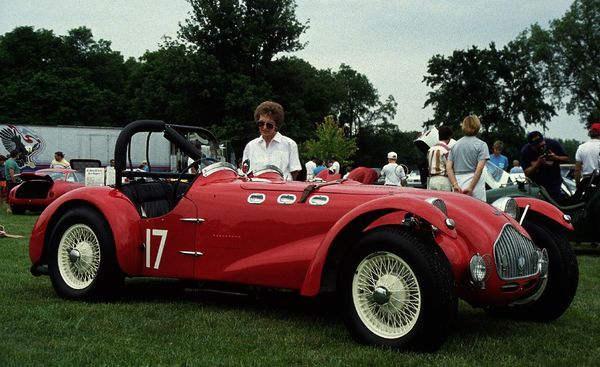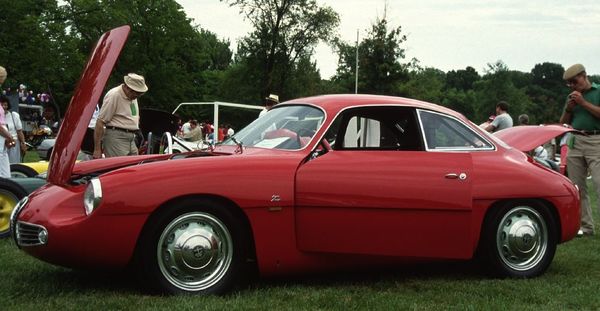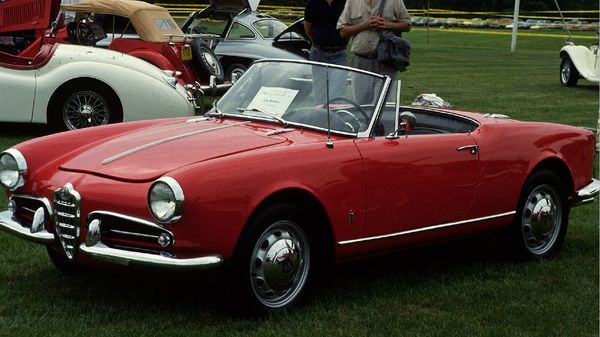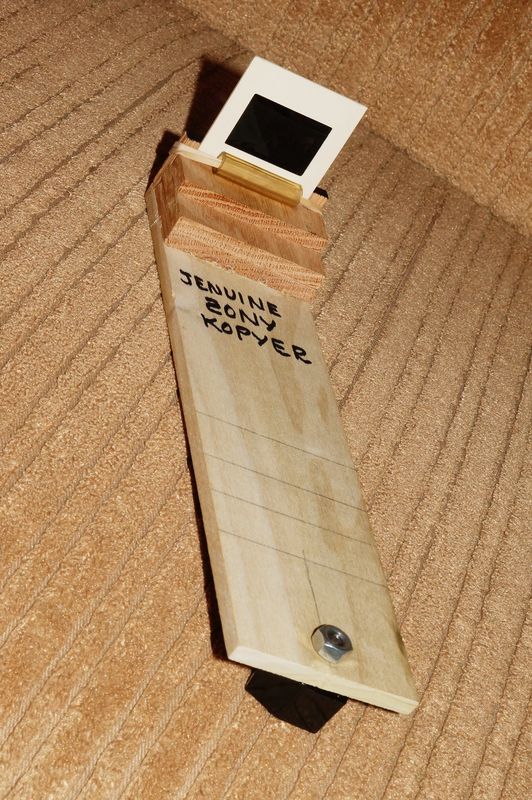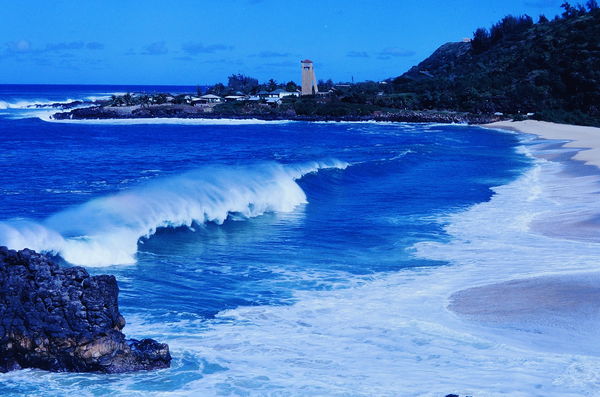Slides to digital
Mar 17, 2017 12:53:57 #
cat30 wrote:
Hi- new guy here.
I have thousands of slides from the golden age of film photography of course now I am thinking of updating them to digital format. Wondering if anyone has projected them on a wall or screen and shooting them with digital camera. Might be faster than s scan them with scanner I would need to buy. Quality of scan less important than maintaining the image.
Thanks
Don
I have thousands of slides from the golden age of film photography of course now I am thinking of updating them to digital format. Wondering if anyone has projected them on a wall or screen and shooting them with digital camera. Might be faster than s scan them with scanner I would need to buy. Quality of scan less important than maintaining the image.
Thanks
Don
=================
Years ago I bought a slide scanner / 4X6 -print scanner, made by HP.
It did a great job getting all of what I had digitized.
I don' know if HP have it anymore now.
I now have the thing in my attic.
I've got to get it down one day and see if I can still use it.
Mar 17, 2017 13:39:24 #
Mar 17, 2017 13:44:28 #
watebo wrote:
This works very well.
No clue what "this" is. You need to use "quote reply" because your messages go to the end of the thread and do not follow what you last looked at.
Mar 17, 2017 14:30:17 #
amfoto1
Loc: San Jose, Calif. USA
cat30 wrote:
Hi- new guy here.
I have thousands of slides from the golden age of film photography of course now I am thinking of updating them to digital format. Wondering if anyone has projected them on a wall or screen and shooting them with digital camera. Might be faster than s scan them with scanner I would need to buy. Quality of scan less important than maintaining the image.
Thanks
Don
I have thousands of slides from the golden age of film photography of course now I am thinking of updating them to digital format. Wondering if anyone has projected them on a wall or screen and shooting them with digital camera. Might be faster than s scan them with scanner I would need to buy. Quality of scan less important than maintaining the image.
Thanks
Don
The best quality is achieved with a very high resolution, dedicated film scanner. 4000 or 5400 pixels per inch minimum, 16X oversampling. Yes, it's slow. And, a good one is pretty expensive. Up to 9000 or even 10,000 ppi is possible, but those are very expensive and even slower.
But, quality scanners are widely available used... Buy one, do the scans, then sell it off like other people are doing. With careful shopping and a little luck you might even recoup much or all of what you spent.
There are dedicated film scanners with bulk feeders, that can handle 40 to 100 slides at a time automatically. Load em up and set them to run overnight.
I use a Nikon with a separately sold, accessory feeder that accommodates up to fourty mounted 35mm slides (not needed for unmounted 35mm slides or negatives singly, or in strips or rolls). At max quality settings it takes 5 or 10 minutes per image to make an excellent 4000 ppi, 16X scan. The end result is a very large 130 MB 16-bit Tiff file. Higher resolution models (Minolta 5400, Imacon 9000, etc.) will make even bigger image files. Newer ones might be faster, but high-quality, over-sampled scans take time! For example, the following images were scanned with my Nikon 4000 from Velvia 50 or 100 or Ektachrome 100 slide film (I forget which). I've printed them and many other slide scans as large as 11x14 and 13x19"...
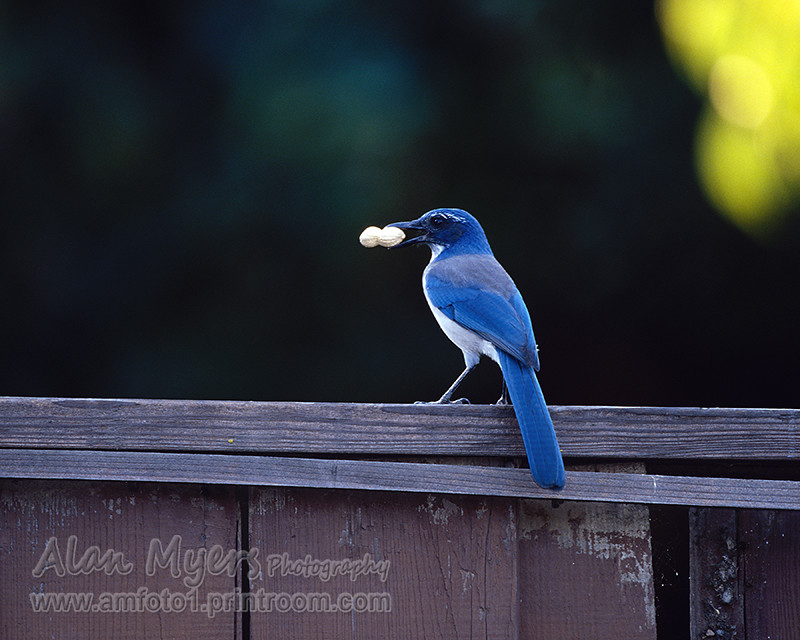



Some flat bed scanners do pretty well, too. Epson V600-V800 series is popular, for example.... You can scan a batch of slides all at one time, making one big (gigantic?) digital file that you later separate. These work better with medium and large format film, than with 35mm. Resolution is typically a bit lower than dedicated film scanners, though. And because the slide or neg is being scanned through a glass platen, there's somewhat lower quality than a dedicated film scanner.
Software that's used with the scanner - flatbed or dedicated film type - can be very important. The original Nikon software that came with my Nikon 4000 fifteen years ago is incompatible with today's operating systems. But new software is available... I've used Vuescan and Silverfast, both of which work well. Vuescan is fairly basic, while Silverfast is very high-end and rather expensive.
An alternative is an "old school" type slide copier rig, used with your digital camera and a macro lens. This can work pretty well, depending upon your camera and lens.
Almost certainly any of the above will do a lot better job than projecting the image and trying to photograph it. Doing that introduces an additional lens, ambient light, the wall or projection screen and other variables... all of which might seriously effect quality.
There are low-cost dedicated film scanners.... some under $100. They're generally a waste of time and money. Most will only generate a small JPEG file, with which you might be able to share the image online in small size, at low Internet resolutions... or make a lower quality 4x6 print, but not much larger.
One other thing you might consider is a scanning service. The price for that varies a great deal, depending upon the quality you need. For simple "family album" type shots, maybe all you need are lower resolution, 25 cent scans. Or for high-end uses, to be able to make large, museum-quality prints, you can easily spend $100 or more for per scan. Even so, outsourcing might be the easiest and most cost-efficient way to get the work done. You can pick and choose among your slides, do them a little at a time and/or in different qualities depending upon the particular image.
Mar 17, 2017 16:58:40 #
Mar 17, 2017 18:38:44 #
Biglemon wrote:
Please be more especific.what kind of Bellows?
For Nikon, the PB-4 or the PB-6 bellows plus the slide/film carrier on the end. All camera brands have their own OEM bellows, all have a slide carrier or some form of holding and backlighting the neg/trans.
You want on the order of a 20-24 Mp capture to get image resolution up to scanner level. I am currently using a Nikon D3300 to get up to 24Mp, No Low pass filtering (AA) for improved sharpness. Creates a good capture one can post process.
However, with a good original film media, I hope to bypass post processing with the 24mp image and the NO AA Filtering.
Except for a dedicated Nikon Super CoolScan 5000 ED, which I recently sold, I bought and sold three Epson V550 and V600's in rapid succession because of time to scan and crappy results. Dedicated film scanners, NOT flatbed's, are better. Drum scans are best. But capturing the images of slides and film/negs works best for me right now, using a DSLR and copy equipment.
I will list two images scanned of 30 Y/O concourse event cars. Scanned these last week with the Nikon Coolscan 5000ED. Even though Nikon quit building these some years ago, they are quite often sold reasonably on eBay, and there is a support system for them. VueScan software ($80) supports them with drivers. VueScan will run almost all scanners built, going back in time.
So, plenty of options available, with most overly time consuming and poor quality. As I said, I am now doing the DSLR/bellows thing. I may buy another Nikon SuperCoolScan, and have it rebuilt. (eBay source)
Pix (30 plus year old Velvia- done last week)
Mar 17, 2017 19:25:58 #
I did that but was not happy with the results. I used the on camera slide copier attachment and was happy with the results. Much faster than a scanner. If you decided to snap them don't use a screen because it will introduce a certain amount of grain. A smooth white wall or a good piece of form board. slide copier attachment here http://opteka.com/slidecopier.aspx
Mar 17, 2017 20:58:50 #
I tried a Jumbl slide copier, but quickly came to the conclusion that it would be a long process because I would be handling each slide individually. Then, I set up my old LaBelle projector and my Canon Rebel 4ti on a tripod and shot a few. The silver reflective screen texture showed up clearly. Next try was to get a piece of foamcore, which has a white paper surface with no texture. Thereults weren't too bad. Final (so far) try was to use the fixed aperture mode (f 11, the sharpest with my 18 -135 lens) with auto exposure and a ISO of 800 or so. I also got a wired remote shutter to make the process easier and went to work. The only downside to this method is that I have to go through a cartridge of 150 slides and capture the landscape mode slides first and then rotate the camera to get the portrait mode ones when I run the entire cartridge again. Since the foam core is 18x24 inches, I also had to rotate it to fit each mode.
I'm still up in the air over whether or not to purchase a dedicated slide copier. The main purpose of my copies is to preserve family history and give a set to each of my four kids. If a really good print is needed, I'll hang on to the slides.
I'm still up in the air over whether or not to purchase a dedicated slide copier. The main purpose of my copies is to preserve family history and give a set to each of my four kids. If a really good print is needed, I'll hang on to the slides.
Mar 17, 2017 22:36:56 #
Photographing an image from the wall or screen will also include the texture and modified color of the projected image. I would totally recomment again doing it that way. If cost is a consideration, you would get better quality from a $100 slide scanner than from projecting the image and photographing.
Mar 18, 2017 08:14:03 #
Here is my homemade rig. I use my Sony A57 with macro lens. I disable anti-shake and shoot against white monitor screen at f8-f11 and 1 second. Kodachrome Photo from 1960.
Mar 18, 2017 22:40:19 #
With the capability of "projecting" your finished on HD flat screen TV, I would certainly NOT go with anything like photographing an image projected on a wall. Unless you're really, really good with camera & projector setup, parallax issues will creep in and/or you will lose image integrity by shooting less than 100% of the projected image. AND which one of the walls in your home or office is really smooth, so that you get no surface imperfections ghosting in the captured image.
I do agree that Epson (flatbed) scanners with transparency/negative capabilities are a great resource at a near throw-away price: great scans and great s/w; the nice thing is that if you just want to save memories, you won't have to invest $ Thousands in a 4000 DPI dedicated scanner.
It is IMPORTANT to learn how to use your scanner before you begin to do your 'archive' scanning. Scanner s/w can be used to perform near magic in helping to preserve the picture you wanted to take rather than the poorly exposed or poorly composed transparency / negative you have.
YOU WANT TO DO AS MUCH IMAGE CORRECTION WITH THE SCANNER S/W AS POSSIBLE. Yes you will have to take the time look at / correct each image; however, this will actually be the second generation of the image, and things just continue to deteriorate in any subsequent computer s/w or print. Some of the deterioration will be negligible, but why settle for "good enough"!
• I agree that TIF is the way to go for your original scans, you are, after all, starting out with a very small target; TIF is not compressed. You can save subsequently "Save As" to PNG or JPG for compressed files to reduce the size of any finished 'project'.
• Scan to fit any (reasonable) future needs, even with multi-T hard drives, any scans over 100MB are probably a waste of space. Do some tests, but I find that 300 DPI at 400% gives a reasonable trade-off of size (file), size (when printed at 100%, this is right at 4" x 6"), quality (plenty good at a 4"x6", 5"x7", or most anything smaller than an 11"x14"), and quality (when viewed on a good monitor or an HD TV).
• Purchase some lint-free gloves.
• Take the time to purchase a can (several) of compressed air to blow off both sides of the slide / negative; somehow that crap has sneaked-in over the years. At an affective resolution of 1200 dpi, dust and lint look like snakes; most s/w that offers dust and scratch removal at time of scan (or after) can / will also effect change to the sharpness of the scanned image.
• And/Or, purchase some of those 'magnetic' dusting pads (ref Swiffer Dusting Kit at the grocery). IMPORTANT Clean both sides of every slide / negative. Between scans, dust off the scanner bed and the facing side of the scanner lid, that crap continues to get on everything.
• If you are just 'archiving" (small "a") for your own use, not for future external use or future family generations, I suppose "good enough" is, well, almost good enough.
• Lastly, develop a good file naming convention that will enable future viewers to know when/what/where/who is in the images. (My buddies for life from Vietnam are now largely forgotten names; old neighbors / relatives / sporting events are also dust in the wind of my memory).
I ramble. Do what you will, but please plan ahead and get it right the first time. Like your old slides, the first time you look at your finished scans will probably be the last time. Just sayin' . . .
I do agree that Epson (flatbed) scanners with transparency/negative capabilities are a great resource at a near throw-away price: great scans and great s/w; the nice thing is that if you just want to save memories, you won't have to invest $ Thousands in a 4000 DPI dedicated scanner.
It is IMPORTANT to learn how to use your scanner before you begin to do your 'archive' scanning. Scanner s/w can be used to perform near magic in helping to preserve the picture you wanted to take rather than the poorly exposed or poorly composed transparency / negative you have.
YOU WANT TO DO AS MUCH IMAGE CORRECTION WITH THE SCANNER S/W AS POSSIBLE. Yes you will have to take the time look at / correct each image; however, this will actually be the second generation of the image, and things just continue to deteriorate in any subsequent computer s/w or print. Some of the deterioration will be negligible, but why settle for "good enough"!
• I agree that TIF is the way to go for your original scans, you are, after all, starting out with a very small target; TIF is not compressed. You can save subsequently "Save As" to PNG or JPG for compressed files to reduce the size of any finished 'project'.
• Scan to fit any (reasonable) future needs, even with multi-T hard drives, any scans over 100MB are probably a waste of space. Do some tests, but I find that 300 DPI at 400% gives a reasonable trade-off of size (file), size (when printed at 100%, this is right at 4" x 6"), quality (plenty good at a 4"x6", 5"x7", or most anything smaller than an 11"x14"), and quality (when viewed on a good monitor or an HD TV).
• Purchase some lint-free gloves.
• Take the time to purchase a can (several) of compressed air to blow off both sides of the slide / negative; somehow that crap has sneaked-in over the years. At an affective resolution of 1200 dpi, dust and lint look like snakes; most s/w that offers dust and scratch removal at time of scan (or after) can / will also effect change to the sharpness of the scanned image.
• And/Or, purchase some of those 'magnetic' dusting pads (ref Swiffer Dusting Kit at the grocery). IMPORTANT Clean both sides of every slide / negative. Between scans, dust off the scanner bed and the facing side of the scanner lid, that crap continues to get on everything.
• If you are just 'archiving" (small "a") for your own use, not for future external use or future family generations, I suppose "good enough" is, well, almost good enough.
• Lastly, develop a good file naming convention that will enable future viewers to know when/what/where/who is in the images. (My buddies for life from Vietnam are now largely forgotten names; old neighbors / relatives / sporting events are also dust in the wind of my memory).
I ramble. Do what you will, but please plan ahead and get it right the first time. Like your old slides, the first time you look at your finished scans will probably be the last time. Just sayin' . . .
Mar 18, 2017 22:55:45 #
• If you are just 'archiving" (small "a") for your own use, not for future external use or future family generations, I suppose "good enough" is, well, almost good enough.
I think that's where I am right now. These pix will be looked at as often as the family looks through the other dozens of albums of family snapshots.
I think that's where I am right now. These pix will be looked at as often as the family looks through the other dozens of albums of family snapshots.
Mar 20, 2017 23:35:43 #
I use an ION PICS 2 SD scanner which is both a film and photo scanner. I scanned all of my slides, photos and negatives that I wanted with excellent results. Easy to use. Comes with a 2GB SD card (you can use others) so you just transfer what you have scanned by plugging the card into your computer (as you do with your camera SD card). Check it out on the internet.
Mar 20, 2017 23:39:03 #
I use a ION PICS 2 SD scanner which is for both film and photos. I scanned all of my slides, photos and negatives that I wanted with excellent results. Check it out on the internet. It is reasonably priced for the quality work that it does.
Mar 21, 2017 09:58:36 #
Streets wrote:
Here is my homemade rig. I use my Sony A57 with macro lens. I disable anti-shake and shoot against white monitor screen at f8-f11 and 1 second. Kodachrome Photo from 1960.
I am surprised that no one has commented on my $1.00 slide copier nor the image made by its use. If I did not brush/blow each slide I copy, I could easily copy 10 slides a minute with it. I doubt that any slide copier purchased for that purpose would do any better. The digital image made with my copier is of 16 megapixels resolution, less a bit due to cropping.
If you want to reply, then register here. Registration is free and your account is created instantly, so you can post right away.

 !
!

